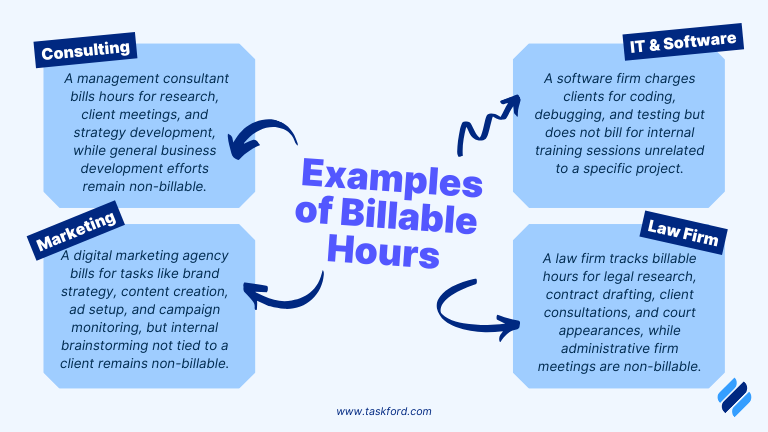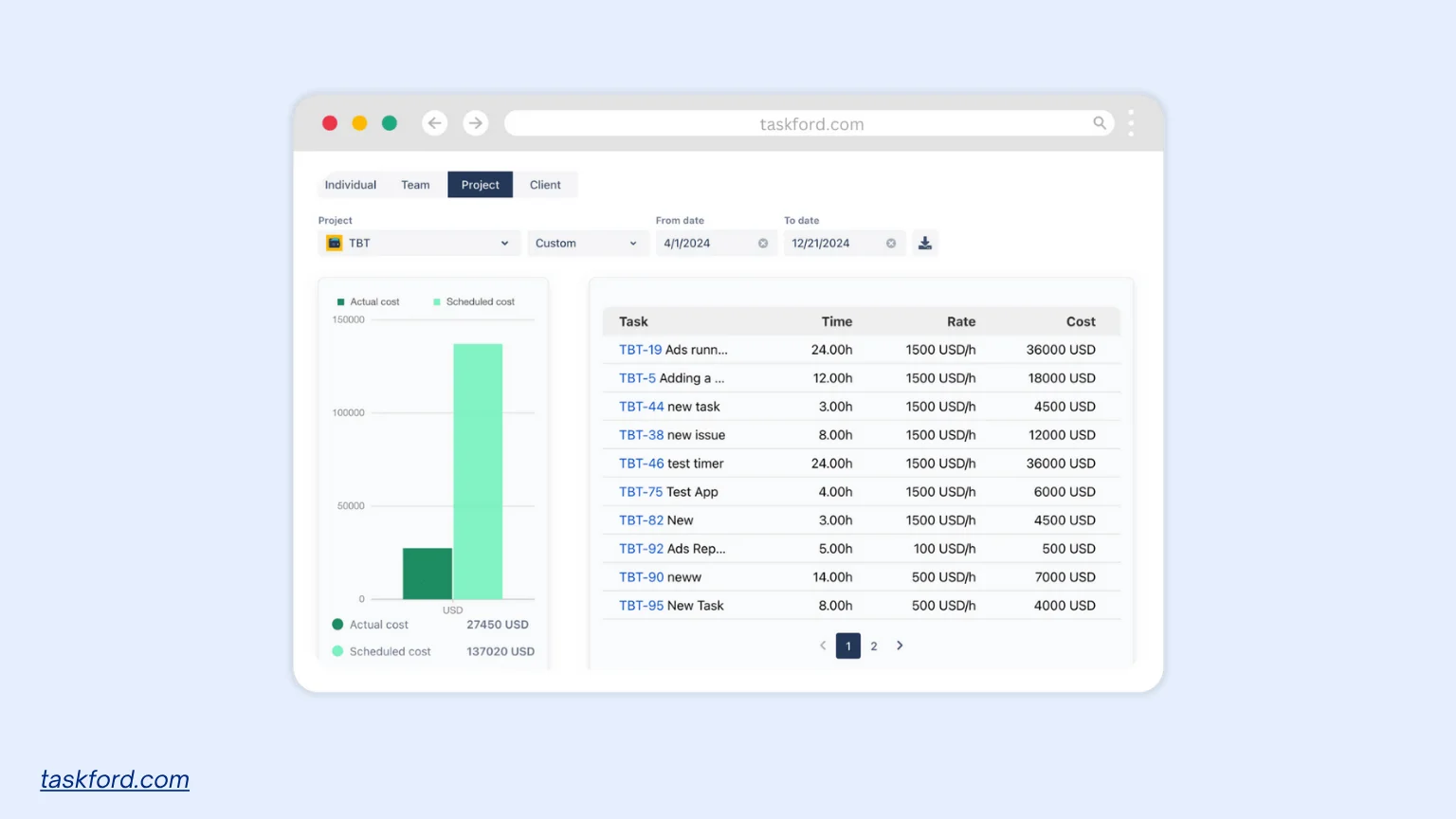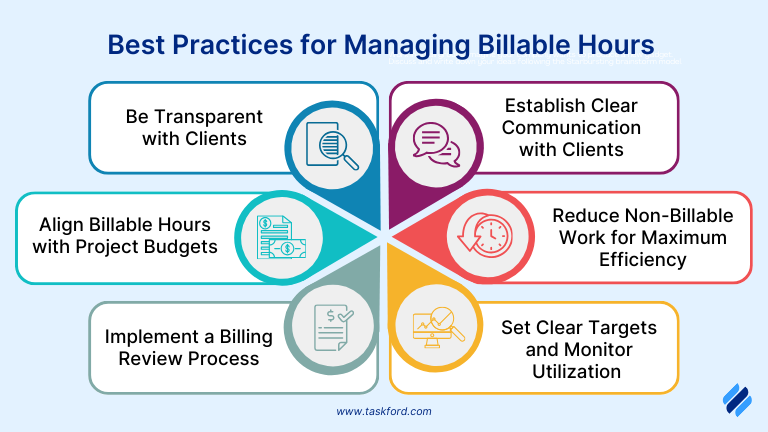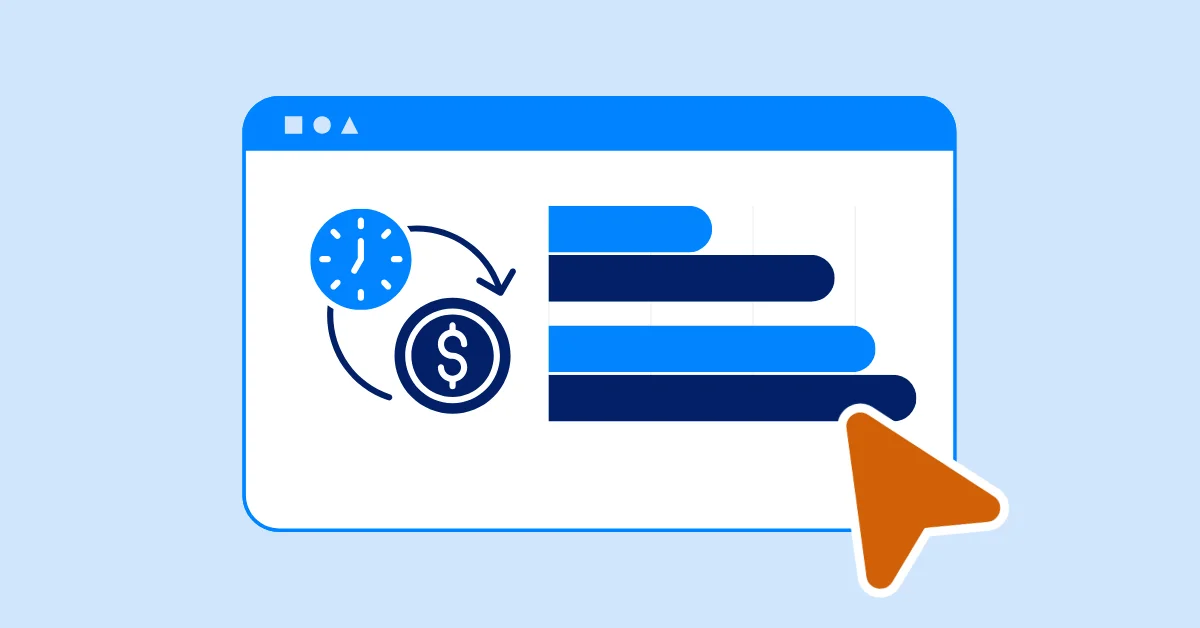What are Billable Hours? Examples, Rules, and Best Practices
Billable hours refer to the time that businesses and professionals spend working on tasks that can be charged to a client.
Billable hours are at the heart of how service-based businesses earn revenue. They represent the time you spend doing work that can be charged directly to a client. Sounds simple, but in practice, it’s easy to lose track of what counts as billable, how to log it, and how to balance it with the non-billable tasks that still keep your business running.
In this guide, we’ll break down what billable hours are, show practical examples from different industries, explain the key rules to follow, and share best practices to help your team stay accurate and profitable.
What are Billable Hours?
Billable hours are the time you spend on tasks that can be charged to a client, such as project work, meetings, or deliverables tied to their contract. These hours are tracked, recorded, and invoiced based on an agreed rate, forming the basis of how service-based teams earn revenue.
![]()
These hours are tracked and recorded through timesheets or project management tools. At the end of each billing cycle, the total billable hours are multiplied by an agreed hourly rate or included in a fixed-fee structure to calculate the client invoice.
Why They Matter
Billable hours are a key measure of how time translates into revenue for service-based teams. Tracking them accurately helps you understand how much of your team’s effort contributes to client work, improve pricing accuracy, and plan capacity effectively.
They also promote transparency with clients, showing exactly where time and budget are spent, which strengthens trust and supports long-term relationships.
Key Reasons Why Billable Hours Matter
- Accurate Invoicing & Client Billing: Helps businesses charge clients fairly for services provided, avoiding disputes and underbilling.
- Optimizing Workforce Productivity: Enables managers to evaluate employee performance and identify inefficiencies.
- Effective Resource Allocation: Ensures workloads are distributed optimally, maximizing the return on billable work.
- Profitability & Financial Health: Maintaining a high billable-to-non-billable hour ratio boosts revenue and business sustainability.
Billable vs. Non-Billable Hours: Key Differences
Not every hour spent at work can be billed to a client — and understanding that distinction is essential for accurate reporting, pricing, and profitability.

1. Billable Hours:
Billable hours refer to time spent on activities that are directly tied to client projects and invoiced accordingly. These activities contribute to the final deliverables agreed upon in a contract.
Billable Hours Examples
- Project work and deliverables for a client
- Client meetings and consultations
- Research or design tied to a specific client project
- Revisions or support within the scope of work
2. Non-Billable Hours:
Non-billable hours consist of internal tasks that do not generate direct revenue. Although necessary for business operations, they are not chargeable to clients.
Non-Billable Hours Examples
- Team or company meetings
- Internal process improvement or admin work
- Employee onboarding or training
- Sales, marketing, or proposal development
| Aspect | Billable Hours | Non-Billable Hours |
|---|---|---|
| Definition | Hours spent working on client-specific tasks or projects. | Time spent on internal business activities. |
| Purpose | Direct client work that generates revenue. | Internal operations that support business functions. |
| Tracked for | Invoicing clients and revenue tracking. | Productivity analysis and operational efficiency. |
| Examples | Consulting, coding, and client meetings. | Marketing meetings, team training, networking. |
Balancing billable and non-billable hours is essential for maintaining financial stability while ensuring internal business growth. Some tasks may be billable for one client but non-billable for another, depending on contractual agreements.
Examples of Billable Hours by Industry

Billable work can look different depending on the type of business. Here are a few common examples across industries:
1. Consulting and Advisory Services
A management consultant working with a company to improve business operations logs billable hours for research, conducting client meetings, preparing strategy presentations, and offering tailored solutions. For example, if the consultant spends 10 hours analyzing company data and 5 hours in follow-up meetings to present findings, all 15 hours are billable.
2. IT & Software Development
A software development firm working on a client's mobile application tracks billable hours for coding, debugging, and quality assurance testing. However, if developers attend a general skill-enhancement workshop that isn’t tied to a specific project, that time is non-billable.
3. Marketing and Advertising
A digital marketing agency hired to create a branding strategy for a client records billable hours for brainstorming sessions, graphic design, writing ad copy, setting up ad campaigns, and monitoring campaign performance.
4. Legal Services
A law firm working on a corporate contract negotiation bills clients for research, document drafting, legal consultations, and court appearances. For example, if an attorney spends 3 hours researching case law, 5 hours drafting the contract, and 2 hours in client meetings, all 10 hours are included in the final invoice.
5. Project Management
A project manager working for a construction company logs billable hours for project management tasks such as planning and coordinating project timelines with the client. Meanwhile, time spent on company-wide administrative meetings remains non-billable.
These examples illustrate how professionals in various industries track and bill their time to ensure clients are charged accurately for services provided.
Rules & Guidelines for Tracking Billable Hours
![]()
Accurate time tracking isn’t just about recording hours — it’s about maintaining fairness, transparency, and consistency across every client project. Establishing clear rules ensures that everyone on the team logs billable time the same way.
1. Define What Counts as Billable
Before tracking begins, establish clear internal definitions of billable and non-billable tasks.
Billable work should directly relate to client deliverables — for example, project execution, client communication, and approved revisions.
Non-billable tasks like admin work, internal meetings, or training should be categorized separately to keep reporting accurate. Creating a shared guideline or reference list helps everyone log time consistently.
2. Track Time Promptly and Consistently
Encourage team members to log time as close to real-time as possible — ideally, daily. Waiting until the end of the week often leads to underreporting or guesswork. Frequent logging ensures all chargeable time is captured and provides more accurate project data for reporting and forecasting.
3. Track Time in Consistent Increments
Businesses should establish a standard time-entry system, such as tracking in 6-minute, 10-minute, or 15-minute increments, to maintain consistency in invoicing and avoid disputes.
4. Maintain Detailed Time Logs
Each time entry should include a brief description of the task performed. This transparency helps clients understand what they are paying for and ensures businesses can justify their invoices if needed.
Read also: How to Easily Track Time with a Billable Hours Chart
5. Regularly Audit Time Entries
Managers or finance teams should periodically review time-tracking data to check for discrepancies. This ensures employees are following policies and that the company is capturing all billable hours efficiently.
6. Use Dedicated Time-Tracking or Project Management Tools
Manual spreadsheets can lead to missed hours and inconsistent data. Using reliable tools — like TaskFord — helps automate time tracking, categorize hours by project or client, and generate accurate reports for billing and analysis.

Integrating time tracking with resource planning also provides visibility into utilization and workload balance.
Read also: Tips & Tricks to Accurarely Track Billable Hour
Best Practices for Managing Billable Hours
Implementing billable hours effectively goes beyond just tracking time—it’s about optimizing how time is used and ensuring transparency and accuracy. Here are some best practices to help your business manage billable hours for maximum efficiency and profitability:

1. Establish Clear Communication with Clients
- Define billable activities upfront: One of the most important aspects of billable hour management is setting clear expectations with clients. Before starting any project, define which activities are billable and which are not. Clearly outline this information in contracts and agreements to prevent disputes. Ensure that clients understand how meetings, revisions, travel time, and additional requests will be billed.
- Set expectations on scope and fees: Discuss project scope and estimated hours upfront to align client expectations with actual work. Clearly explain what is included in the agreed budget and highlight any potential extra charges that may arise. Clients should never be surprised by an invoice, so having these discussions early helps build trust.
2. Reduce Non-Billable Work for Maximum Efficiency
- Identify and minimize administrative tasks: Businesses should regularly evaluate how much time is being spent on non-billable work, as excessive administrative tasks can reduce profitability. Common non-billable activities include internal meetings, paperwork, scheduling, and general operational duties. Identifying and minimizing these tasks can help teams allocate more time toward revenue-generating work.
- Automate routine processes: Automating repetitive processes such as appointment scheduling, invoicing, and time tracking can significantly reduce time spent on administrative duties. Many modern software solutions allow businesses to streamline these tasks, freeing up more hours for billable client work.
3. Set Clear Targets and Monitor Utilization
- Define realistic billable hour targets: Setting clear targets for billable hours helps ensure that teams maintain a healthy balance between billable and non-billable work. Industry benchmarks vary by sector, but many service-based businesses expect employees to maintain a utilization rate of 70-80%.

- Track billable vs. non-billable time: To ensure that targets are met, businesses should implement time-tracking tools that allow employees to log both billable and non-billable hours. Regularly reviewing time data helps identify areas where productivity can be improved. If employees consistently fall below billable targets, it may indicate inefficiencies, excessive administrative work, or unclear project scope.
Read also: The 5 Billable Hours Trackers
4. Implement a Billing Review Process
- Establish an approval workflow: A structured billing review process ensures accuracy before invoices are sent to clients. Implementing a timesheet approval workflow, where supervisors or project managers review logged hours before invoicing, helps eliminate errors and discrepancies.
- Verify hours against deliverables: Businesses should cross-check billable hours against project deliverables to ensure that all logged work aligns with contractual agreements. If a discrepancy arises—such as unexpected additional hours or tasks that weren’t initially scoped—addressing these issues before invoicing prevents disputes and maintains client trust.
5. Align Billable Hours with Project Budgets
- Track time against project estimates: Keeping track of billable hours in relation to project budget management ensures that businesses remain profitable while meeting client expectations. Time should be continuously compared to project estimates, and if billable hours start exceeding planned budgets, teams must take corrective action early.
- Adjust resources proactively: If projects require more time than initially estimated, businesses should adjust resources, extend deadlines, or modify project scope accordingly. Instead of exceeding the budget without informing the client, communicate proactively to discuss any additional time or costs required.
6. Be Transparent with Clients
- Provide detailed, itemized invoices: Transparency in billing practices fosters trust and long-term client relationships. Providing detailed, itemized invoices that clearly break down time spent on each task helps clients understand the value they are receiving. Instead of sending a general invoice for "consulting services – 50 hours," a well-structured invoice should list specific tasks, such as "Market research – 15 hours," "Client strategy meetings – 10 hours," and "Presentation development – 5 hours."
- Keep clients updated: Regular client updates on time usage and project budgets further enhance transparency. Clients appreciate knowing how much of their budget has been used and whether any additional work is anticipated. Frequent communication prevents last-minute surprises and enables clients to plan their finances accordingly.
Conclusion
Effective management of billable hours ensures financial stability and enhances productivity. By tracking hours accurately, optimizing workflows, and maintaining transparency with clients, businesses can maximize profitability and build long-term client relationships. Implementing structured policies and best practices helps companies reduce inefficiencies and maintain a balanced approach to billable and non-billable work.
Related Resources:
- Time Tracker - What Is It and How to Choose the Best One for Your Needs.
- Time Management Strategies for Quick Wins & Lasting Success.
- Time Management Matrix - The Framework Your Focus Should Follow
Making work simpler,
smarter, and more connected
Join our waitlist and be notified first.

Related Blog
Subscribe for Expert Tips
Unlock expert insights and stay ahead with TaskFord. Sign up now to receive valuable tips, strategies, and updates directly in your inbox.






